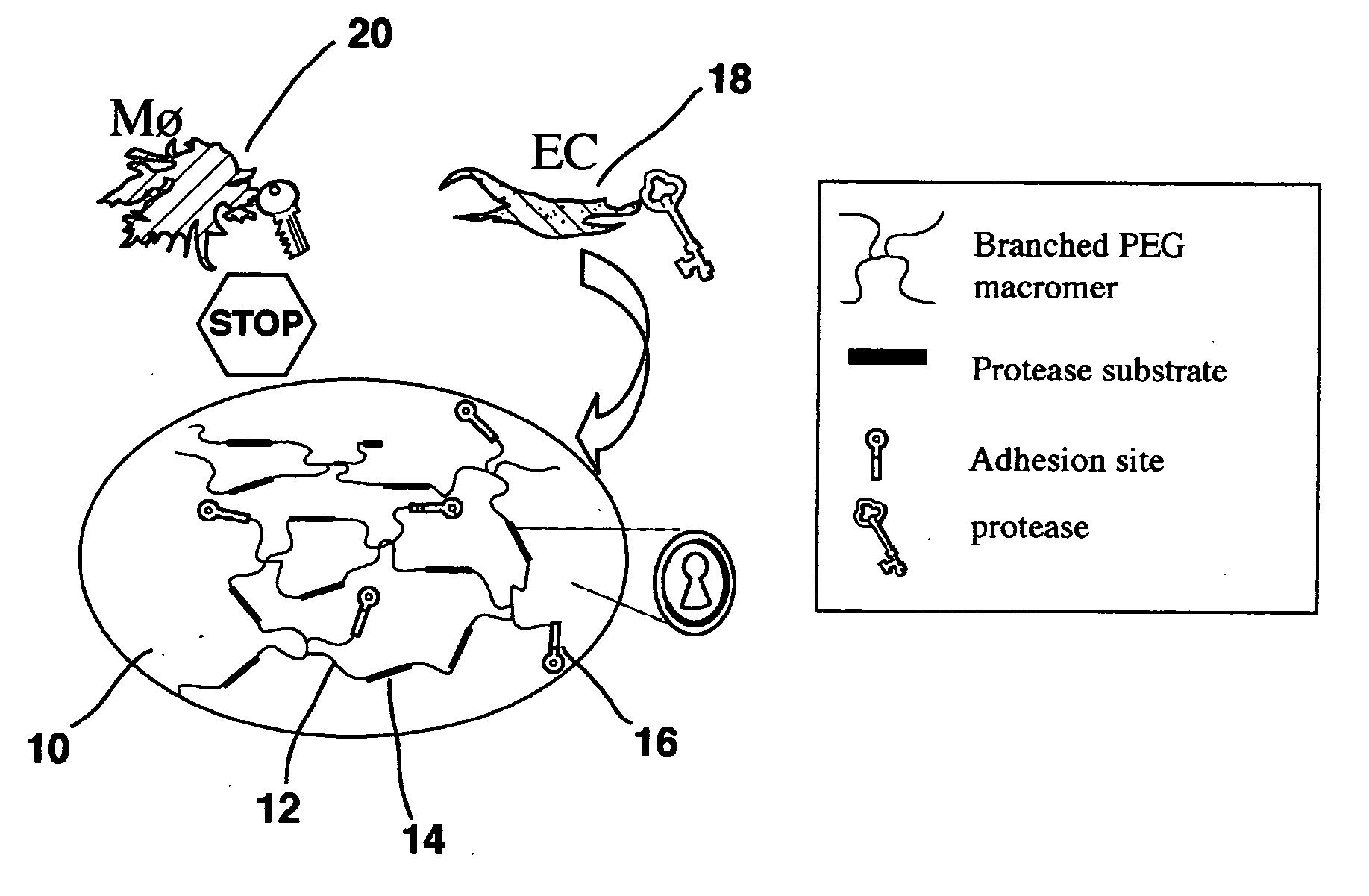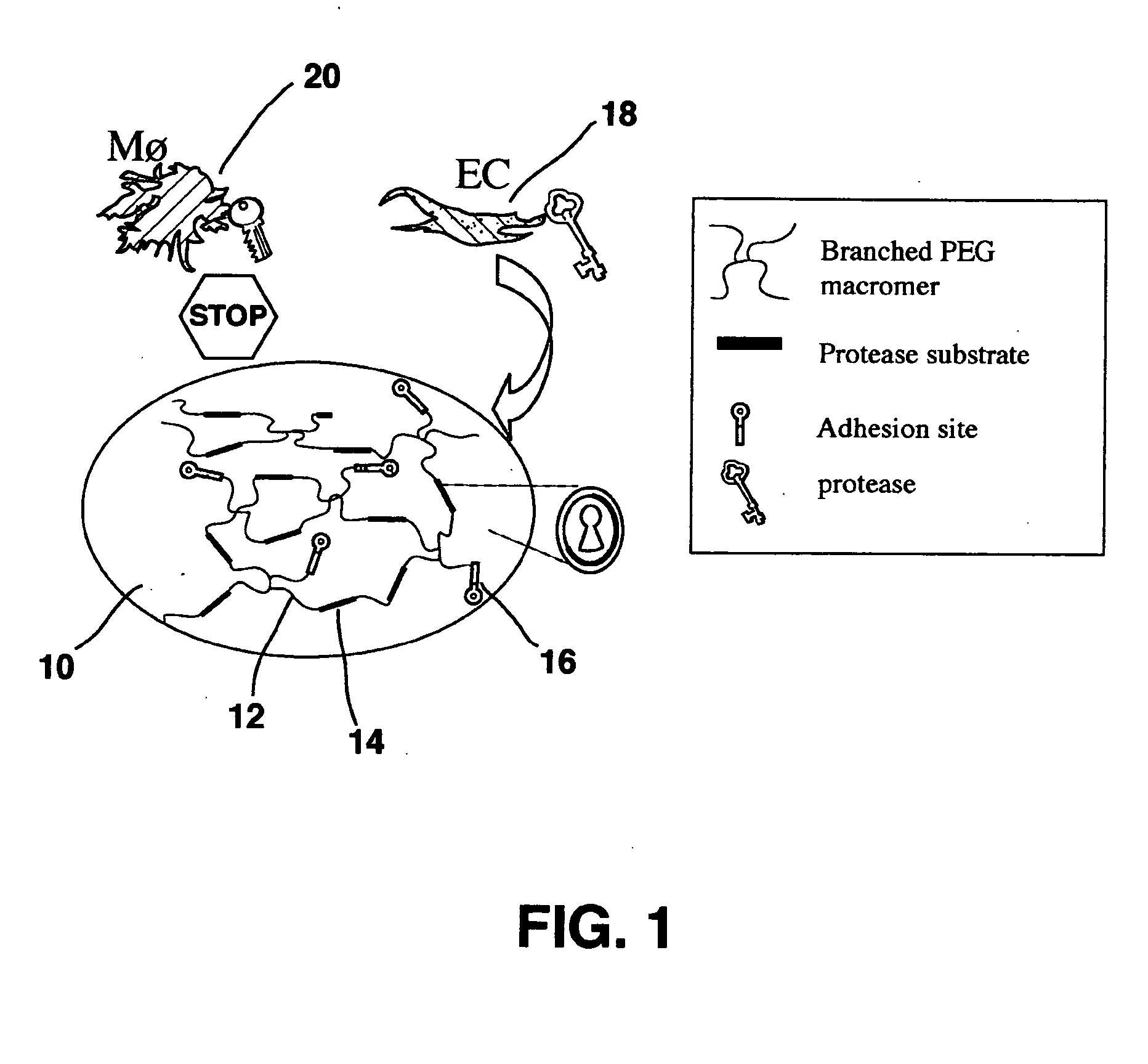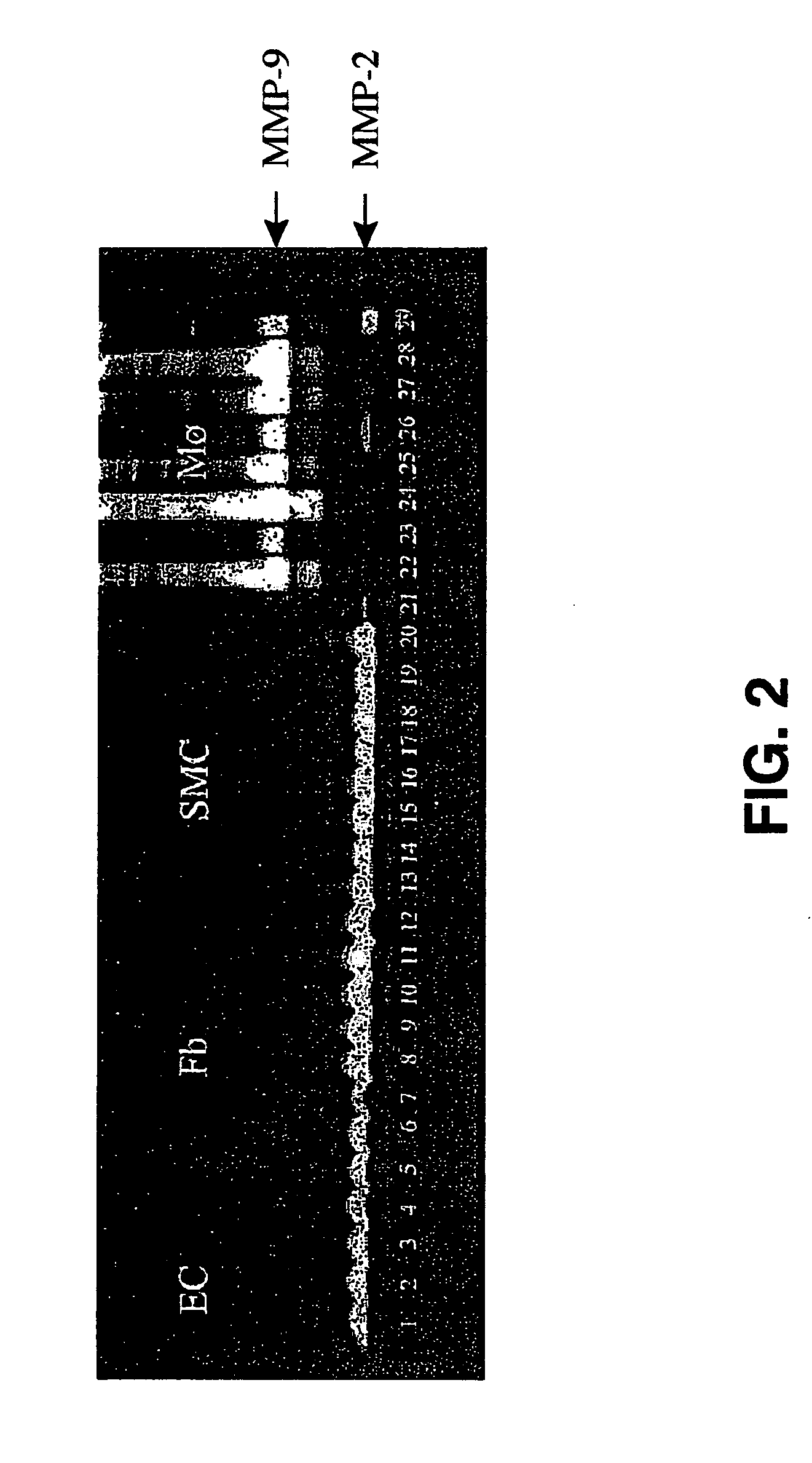Hydrogel providing cell-specific ingrowth
a technology of hydrogels and ingrowth cells, applied in the field of biocompatible polymers, can solve the problems of lack of cell adhesion, inert biomaterials may not provide the desired response when used in implantable medical devices, and inert biomaterials may not provide the desired response, etc., to facilitate cell-specific ingrowth, increase the number of desired cells, and encourage migration and adhesion
- Summary
- Abstract
- Description
- Claims
- Application Information
AI Technical Summary
Benefits of technology
Problems solved by technology
Method used
Image
Examples
example 1
Preparation of Starting Materials: Acrylated Polyethylene Glycol and Peptide Sequences
[0077] Polyethylene glycol (PEG, 20 kDa, 8-arm, Shearwater Corporation) was acrylated by treatment with acryloyl chloride in accordance with Elbert et al., Protein Delivery from Materials Formed by Self-selective Conjugate Addition Reaction, J Control Release 2001; 76:11-25. A 10% PEG solution in toluene was dried by azeotropic distillation (removing a third of the volume) and diluted back to original concentration through anhydrous addition of dichloromethane (DCM). After cooling in an ice bath and addition of 50% molar excess of triethylamine (TEA), 50% molar excess of acryloyl chloride (AcCl) was added dropwise over 5 minutes. The ice-bath was removed, and the reaction continued under an Argon atmosphere at room temperature (RT) for 24 hours. Subsequent filtering, precipitation (3 times into cold hexane), extraction from an aqueous solution (10% PEG-8Ac, 0.5% NaCl, pH=6) into DCM, final precipi...
example 2
Preparation of PEG Hydrogel Containing Adhesive Peptides
[0079] Hydrogel derivatized with adhesive peptides was prepared for use in testing the adhesion of MVEC and HVSMC. 20 kDa PEG-8-Ac hydrogels (12.5% w / v, before swelling) were bound to either a single peptide at 0, 0.5, 2, 8, and 32 mol percent (using RGD, PHSRN (SEQ ID NO: 109), or YIGSR (SEQ ID NO: 103) peptides) or a combination of RGD (8 mol % of the available acrylate groups) with an equimolar loading of either PHSRN (SEQ ID NO: 109) or YIGSR (SEQ ID NO: 103). Linear 3.4 kDa PEG-dithiol was subsequently used to cross-link the peptide-capped PEG-8Ac.
[0080] PEG-8Ac acrylate (50% of final volume), peptides (according to the dilution series described above, 25% of final volume) and PEG-2SH (25% of final volume) were dissolved in 50 mM Phosphate Buffered Saline (PBS), vortexed, and sterilized by filtration (0.45 μm). PEG-8Ac and peptide aliquots were mixed and incubated for 1 h at 37° C. The reaction between PEG-acrylates and ...
example 3
Preparation of PEG Hydrogel Cross-Linked by Protease Substrate Peptides
[0081] The peptide GCRDSGESLAYYTADRCG (SEQ ID NO: 113) has been shown to be sensitive to hydrolysis by MMP-2, and contains more than one thiol (present in cysteine) for use as a nucleophile in addition reactions with unsaturated groups. The peptide was synthesized according to the methods described above. Hydrogel was formed from PEG-2500-3A, in which the molecular weight notations refers to total average molecular weight. A polymer matrix was then formed from PEG-2500-3A and GCRDSGESLAYYTADRCG (SEQ ID NO: 113). Hydrogel polymer matrices were formed in 10 mM phosphate buffered saline with triethanolamine to adjust the pH to 8.0-9.0 as tested by paper pH strips (hydrogel formation reactions were performed at 50 microliter and smaller scales). Hydrogels have been made by either predissolving the peptide and then adding peptide solution to PEG-3A, presissolving the PEG-3A and adding its solution to the peptide, or ...
PUM
| Property | Measurement | Unit |
|---|---|---|
| Adhesion strength | aaaaa | aaaaa |
| Hydrophilicity | aaaaa | aaaaa |
| Biocompatibility | aaaaa | aaaaa |
Abstract
Description
Claims
Application Information
 Login to View More
Login to View More - R&D
- Intellectual Property
- Life Sciences
- Materials
- Tech Scout
- Unparalleled Data Quality
- Higher Quality Content
- 60% Fewer Hallucinations
Browse by: Latest US Patents, China's latest patents, Technical Efficacy Thesaurus, Application Domain, Technology Topic, Popular Technical Reports.
© 2025 PatSnap. All rights reserved.Legal|Privacy policy|Modern Slavery Act Transparency Statement|Sitemap|About US| Contact US: help@patsnap.com



